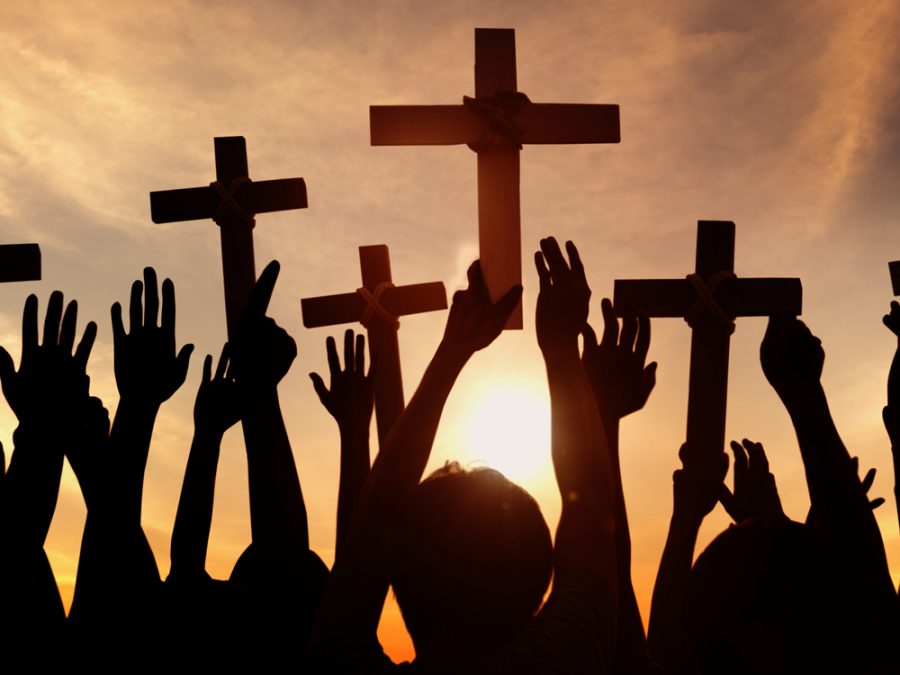Religion in America Today: What’s Correct According to the Latest Data
Overview: How to Tell Which Statements About Religion in America Are Correct
To judge whether statements about religion in the United States are correct, rely on large, nationally representative studies that publish methods and margin of error. The most authoritative, recent snapshots come from Pew Research Center’s 2023-24 Religious Landscape Study and PRRI’s 2024 Census of American Religion. These sources show a continued Christian majority, a plateau in the decline of Christianity in recent years, steady growth of religiously unaffiliated Americans over the long term, and small but gradually rising shares of non-Christian religions. Below, you’ll find which types of statements are correct, why they’re supported, and how to verify them yourself using step-by-step guidance and vetted references.
Correct Statement 1: A majority of U.S. adults still identify as Christian
Recent nationally representative data indicate that Christians remain a majority of U.S. adults. Pew’s latest Religious Landscape Study (RLS) finds 62% identify as Christian, with Protestants around 40% and Catholics at 19%-a distribution that has stayed relatively stable in the past five years [1] . PRRI’s 2024 Census of American Religion similarly reports roughly two-thirds (65%) identify as Christian, underscoring that a majority still does so nationwide [4] . The Associated Press’ reporting on the new Pew survey corroborates these shares and their stability [3] .
Example: A claim such as “Christians are now a minority in America” would be incorrect according to these current datasets. Instead, you can accurately say “Christians remain a majority-about six in ten adults.”
How to verify: Review the topline shares and subgroup breakdowns (Protestant, Catholic) in the latest Pew RLS release and compare to PRRI’s 2024 national totals for convergence [1] [4] .
Correct Statement 2: The long-term decline of Christianity has recently slowed or leveled
Over the past two decades, the Christian share has fallen from higher levels (e.g., from 78% in 2007 to the low 60s today), but the newest Pew data show the decline has slowed and may have leveled off between 2019 and 2024, hovering around 60%-64% [1] . News coverage summarizing the latest RLS highlights the same pattern: the drop has eased, with current shares relatively stable year to year [3] .
Example: “Christianity is collapsing year after year” overstates the current trajectory. A more accurate statement is: “After a long decline, the Christian share has been relatively stable in the last several years.”
How to verify: Check Pew’s time-series trend lines in the 2007, 2014, and 2023-24 RLS releases to see the long-run decline and the recent plateau band of roughly 60%-64% [1] .
Correct Statement 3: Religious “nones” (atheist, agnostic, nothing in particular) are near three in ten adults
Pew’s latest RLS reports religiously unaffiliated adults at 29% and notes a plateau in recent years after long growth [1] . PRRI’s 2024 release shows a similar level: unaffiliated Americans at 28%, marking a continued long-term rise even as year-to-year changes are modest [4] .
Example: Statements like “Only a small fraction are unaffiliated” are outdated. A precise phrasing would be: “Roughly three in ten adults identify as religiously unaffiliated.”
How to verify: Review the unaffiliated category levels in Pew’s RLS and PRRI’s annual census, noting both the most recent percentage and the trend since 2013 [1] [4] .
Correct Statement 4: Protestants and Catholics remain the largest Christian subgroups
Within the Christian majority, Protestants comprise about 40% of U.S. adults and Catholics about 19%, according to the latest RLS. Other Christian groups total about 3% (including Orthodox Christians, Latter-day Saints, and Jehovah’s Witnesses) [1] . The Associated Press’ summary of the new survey confirms these distributions and notes the two largest Protestant denominations remain the Southern Baptist Convention and the United Methodist Church, despite member losses since 2007 [3] .
Example: “Catholics are now the majority of Christians” would be incorrect. The accurate statement is: “Protestants collectively are the largest Christian bloc, followed by Catholics.”
How to verify: Check Pew’s subgroup breakdowns for Protestants, Catholics, and other Christian traditions in the most recent RLS release; cross-read AP’s coverage for plain-language confirmation and denominational context [1] [3] .
Correct Statement 5: Non-Christian religions are growing gradually but remain a small share
Pew’s latest estimates show those identifying as Jewish (about 1.7%-2%), Muslim (~1.2%), Buddhist (~1.1%), and Hindu (~0.9%), with the broader non-Christian total in the single digits nationally [1] . AP’s summary similarly notes that people identifying with religions besides Christianity make up a small portion (about 7%), including roughly 2% Jewish and around 1% each Muslim, Buddhist, and Hindu [3] . PRRI’s 2024 national snapshot aligns, placing non-Christian religions collectively at about 6% [4] .
Example: “Non-Christian religions now account for a quarter of the country” is inaccurate. A correct phrasing is: “Non-Christian religions collectively remain under 10% but have grown gradually.”
How to verify: Compare Pew’s religion-by-religion percentages to PRRI’s aggregate non-Christian share and note the consistent single-digit totals across both sources [1] [4] .
Correct Statement 6: Demographic composition within religious groups is changing
Like the broader U.S., many religious groups have seen shifts in racial and ethnic composition. Pew reports the share of U.S. Christians who are non-Hispanic White has declined from 70% in 2007 to 61% today, reflecting broader demographic change [5] . This context helps evaluate statements about the growing diversity within American Christianity and other traditions.
Example: “Christians in America are demographically unchanged” is incorrect. A substantiated statement is: “American Christianity has become more racially and ethnically diverse over time.”
How to verify: Review Pew’s demographic traits analysis by age, race/ethnicity, and other factors for each religious group and compare to earlier benchmarks provided in the same release [5] .
How to Assess Any Statement: A Step-by-Step Verification Guide
Use this repeatable process to check whether a specific claim about U.S. religion is correct:
- Identify the claim precisely. Write down the exact wording (e.g., “30% of Americans are unaffiliated”).
- Locate the latest national survey. You can consult the latest Pew Religious Landscape Study and PRRI Census of American Religion for current shares and trends [1] [4] .
- Check time frames and margins of error. Confirm the field dates (e.g., 2023-24) and note that small differences (±1-2 points) can reflect sampling error rather than real change [3] .
- Cross-validate across sources. Look for convergence between Pew and PRRI. If both align, confidence increases [1] [4] .
- Beware of absolutes. Claims like “all,” “none,” or “collapsed” are rarely accurate. Prefer ranges grounded in current survey estimates [1] .
Common Misstatements and How to Correct Them
Misstatement: “Christians are below 50% now.” Correction: Multiple current sources place Christians around 60%-65%, not under half [1] [4] .

Source: chegg.com
Misstatement: “Unaffiliated Americans have stopped growing altogether.” Correction: Over the long run, unaffiliated have increased to the high 20s; in the very recent period, growth has slowed or plateaued near that level [1] [4] .
Misstatement: “Non-Christian religions have overtaken Christianity.” Correction: Non-Christian religions collectively remain under 10% nationally, while Christianity remains the majority [1] [3] .
Practical Applications: Using Accurate Statements for Planning and Outreach
For community leaders, nonprofit funders, and faith-based organizations, accurate statements inform better decisions:
Community needs assessments: When planning programs, expect a Christian majority with substantial unaffiliated populations and small but growing non-Christian communities. Tailor outreach and language to be inclusive and data-aware [1] [4] .

Source: hello-america.com
Grant narratives and proposals: Cite current percentages and note methodological details such as sample size and field dates to strengthen credibility. The AP report summarizes Pew’s methodology: 36,908 respondents, fielded July 2023-March 2024, ±0.8 percentage points MOE for the full sample [3] .
Media literacy and training: Teach teams to distinguish long-term trends from short-term plateaus. Acknowledge regional and demographic variation, such as shifts in racial composition within Christian groups reported by Pew [5] .
Alternative Approaches to Validation When You Can’t Access Links
If you cannot access the sources above, you can still validate claims by:
- Searching for “Pew Research Center Religious Landscape Study 2023-2024 topline results” and confirming field dates, sample size, and current shares of Christians, unaffiliated, and non-Christian religions.
- Searching for “PRRI 2024 Census of American Religion national findings” to cross-check Christian, unaffiliated, and non-Christian totals.
- Consulting reputable news coverage that summarizes the latest Pew/PRRI releases with methodology and margin of error.
Key Takeaways You Can State Confidently
Based on the latest evidence, the following statements are correct:
- Christians remain a majority of U.S. adults, at roughly six in ten.
- The long-term decline in the Christian share has slowed and may have leveled in recent years.
- Religiously unaffiliated Americans now comprise around three in ten adults.
- Protestants are the largest Christian subgroup, followed by Catholics.
- Non-Christian religions are growing gradually but remain a small share nationally.
- The demographic makeup within religious groups continues to change, including declining shares of non-Hispanic White Christians.
References
[1] Pew Research Center (2025). Decline of Christianity in the U.S. Has Slowed, May Have Leveled Off.



